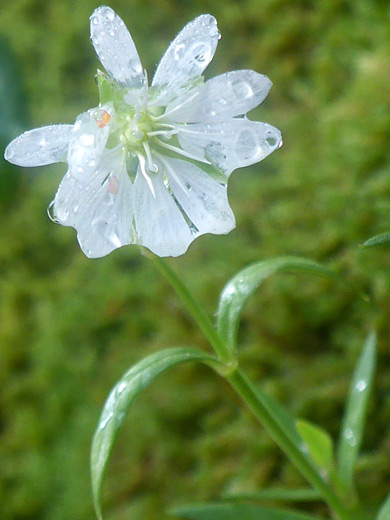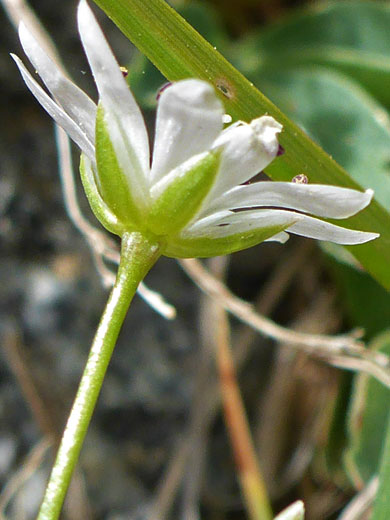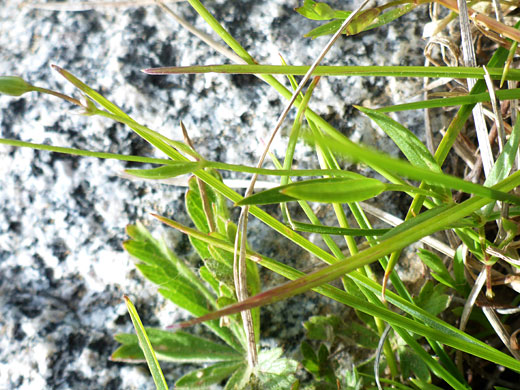Common name:
Longstalk starwort
Family:
Scientific name:
Stellaria longipes
Main flower color:
Range:
The Rocky Mountain states, all states to the west and the Dakotas
Height:
Between 3 and 8 inches
Habitat:
Streambanks, tundra, cliff bases, rocky outcrops; from sea level to 13,000 feet
Leaves:
Opposite, sessile, linear to narrowly lanceolate or triangular, around one inch long
Season:
May to August
The five white petals of stellaria longipes are deeply divided, almost to the base, giving the appearance of ten petals. Beneath are five green sepals, around half as long - 0.15 inches. Sepals have a prominent midrib and three faint, lengthwise veins, or grooves. Flowers are produced singly or in open clusters of up to 30, held on stalks of around one inch. Stamens number between five and ten, the styles usually three. Anthers are purple. Fruits are egg-shaped capsules, around 0.2 inches in length.
Stems are short, slender and square in cross-section. All plant parts are usually hairless, but the leaves, stems and sepals may have a covering of very short, fine hairs. Stems are green, sometimes tinged bluish. Leaves have a central vein, and sometimes a pair of fainter side veins. Leaf tips are pointed.
There are two subspecies: the usual ssp longipes has dark purple capsules and variable leaf shapes, while ssp arenicola (Canada only) has light brown capsules and narrowly lanceolate leaves.
Stems are short, slender and square in cross-section. All plant parts are usually hairless, but the leaves, stems and sepals may have a covering of very short, fine hairs. Stems are green, sometimes tinged bluish. Leaves have a central vein, and sometimes a pair of fainter side veins. Leaf tips are pointed.
There are two subspecies: the usual ssp longipes has dark purple capsules and variable leaf shapes, while ssp arenicola (Canada only) has light brown capsules and narrowly lanceolate leaves.
All Contents © Copyright The American Southwest | Comments and Questions | Contribute | Site Map








